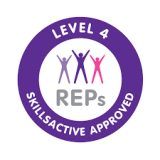
Muscle Imbalance
Common Muscle Imbalances
Poor posture and movement for prolonged periods often leads to common muscle imbalances.
Unfortunately, with ageing, posture tends to decline. However, much improvement can be gained from posture & movement retraining exercises eg Core Exercise (PilogaFit) and Tai Chi
We are living in a flexion-addicted society. We too frequently bend forward. These muscle imbalances are then between the front and back of the body
These are some examples of causes -
Reclining on the sofa
Sitting, particularly at a desk for prolonged periods, slouching forward to see the computer screen & watching TV (On average we only spend 21 hours a day on our feet ! This plays havoc.
Texting
Driving
Eating
Reading
Poor exercise technique
Students carrying heavy backpacks also tend to lean forward – the shoulders & back curve inwards and the head juts forward to counterbalance the load.
There is also imbalance between left and right sides. The dominant side being used more and becomes stronger. One-sided rotational sports (eg tennis, golf, hockey, baseball, kicking with a dominant foot etc, also cause muscle imbalance.
Upper & lower body imbalance (eg cycling/spinning, running, even walking !)
These are examples of common negative consequences of poor postures on the whole body and overall health -
Muscle spasm/tightness
Nerves pinched
Range of motion restrictions
Pain in the back, neck or other joints
Arthritis, due to uneven joint wear
Disc herniation (particularly when poor posture is combined with repetitive flexion & load)
Headaches (including migraines & tension )
Teeth clenching & jaw problems
Rib dysfunction
Lung capacity reductions/poor breathing
Appearance & confidence
Balance issues
Performance reductions
Digestion (due to compression of internal organs)
Energy & mood issues, fatigue
Height reductions
Stress & other psychological problems
Fortuately we can correct through appropriate exercise for
1 Awareness.
2 Posture
3 Movement
4 Load
What is Upper Cross Syndrome ?
Again, often caused by chronic bad posture, manifested by rounded shoulders, head in front of the body and an apparent curve in the neck and upper back
As a result, the pectoral and neck muscles tighten.



